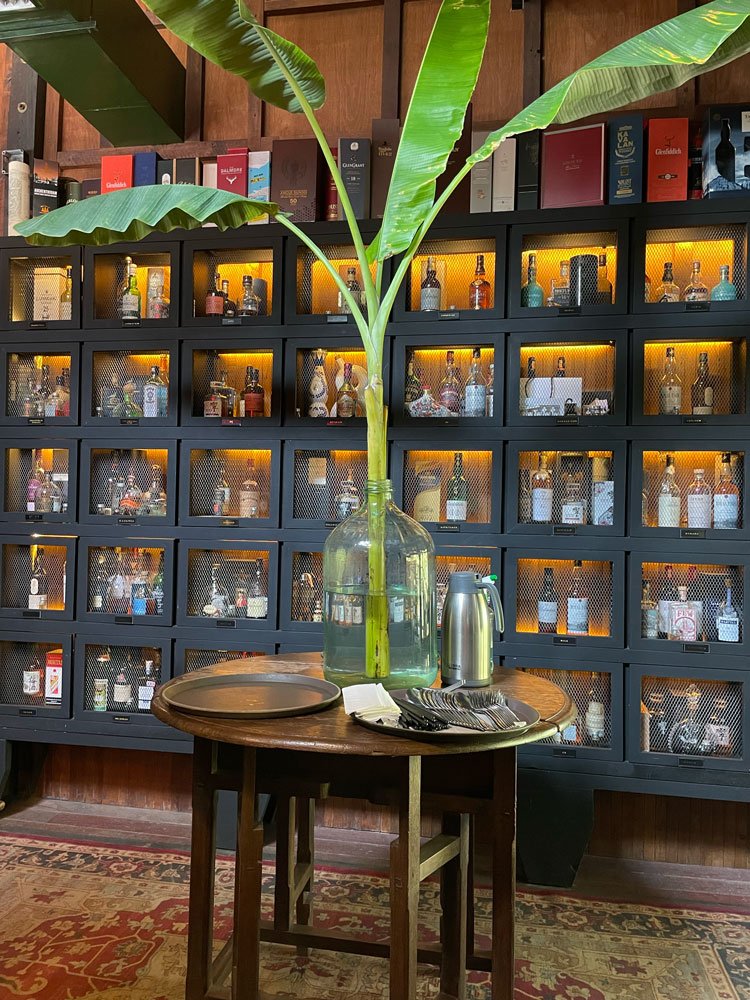INSIGHT
Rangoon Tea House
Our recent travels bring us to the Far East, to a jewel in the crown that is the Rangoon Tea House. Named one of the world’s top 11 tea houses by the CNN, RTH is aptly located in the Golden Valley, an affluent leafy suburb in the centre of the former capital of Myanmar.
Here, sipping on a perfectly chilled coconut, enjoying the mid morning hustle and bustle (we are told the lack of sound proofing is intended to retain the atmospheric authenticity of a Tea House), we meet with the enigmatic Myanmar born - Newcastle bred, founder and managing director, Htet Myet Oo.
Htet, named in Forbes 30 under 30 Asia, created RTH along with his wife Izzy. Starting out as an investor in a premium recycled teak furniture company, with no prior experience, Htet turned his hand to becoming a restaurateur. With a nod to his previous venture, RTH was born almost entirely out of eco friendly resources - recycled teak, timber, and brick.
RTH’s structural work was undertaken by local architect and artist Sayar U Mra Thaung, an expert furniture maker, using a team from the Rakhine state and fascinating traditional Rakhine methods of joinery and carpentry.
The striking interior design of RTH is entirely Htet’s creation, enforcing his belief that it’s what’s on the inside that matters most. Taking inspiration from Geoffrey Bawa’s Tropical Modernism, using natural materials and geometry to create meaningful spaces and light, vast windows perfectly capture the view out. A curious but intentional lack of venue signage is entirely intrinsic in giving the place a second home feel along with a multiple entrance system, which Htet wryly admits can be quite the headache for his staff!
Regularly trawling local junkyards, Htet has filled this place both with up-cycled sentimental pieces from his personal collection, and exquisite antiques he’s unearthed or in his own words “hoarded”. Solid wood staircases from an old bank bridge the internal structure of the venue. Corrugated metal sheets once roofing, now rivetted onto interior walls. A strikingly long bar from a colonial era European members club, later repurposed for textiles, is graciously resurrected. Singha sewing machines from Htet’s grandmother’s former sewing school, are dotted around the venue, some deftly transformed into feature pieces. Incredibly not one article of new furniture is to be found here.
At first glance one might mistake the RTH concept as nostalgic homage to a bygone era, but on closer inspection, it’s distinct charm and character does not offer that indulgence. As Htet explains, it’s not about replicating the past but rather honouring and taking inspiration from it, whilst producing something new through the creative reuse of materials and a zero-waste strategy. Beyond it’s beauty, functionality, sustainability and comfort lie at the heart of this venue, and that is it’s true grace.
Within its spacious structure, RTH’s excess capacity is efficiently commercialised by hosting both in-brand and complimentary out-of-brand ventures. We find The Burman, a traditional barber’s shop offering classic luxury, and The Reading Room, RTH’s own whiskey lounge with its much loved circular bar, having spent it’s former life as a tea station serving fifty million cups of tea. For the whiskey fanatic, a membership based bottle locker scheme is another popular feature of The Reading Room.
Upcoming commercial placements which further enhance cross marketing, include a local florist, also conveniently supplying RTH with fresh floral arrangements. A regular rotation of local artist’s exhibits line the walls, which alongside Htet’s penchant for frequently rearranging the furniture, keeps the decor captivating.
What we surprisingly uncover on our visit, is that RTH is more than just a restaurant. It is an experiment, a feat in sustainability, paving the way for what new buildings should/could look like adopting a circular strategy. It’s brand responsibility reaches beyond it’s customers, aiming to inspire younger generations of chefs and restaurateurs to utilise and showcase the talents of local craftsmen while repurposing resources and limiting waste.
As our meeting draws to a close, and lunchtime approaches accompanied by irresistibly delicious aromas, we thought it only fitting to tuck into one of their famous Biryani dishes. It most certainly did not disappoint. Having had a taste of the Rangoon Teahouse Golden Valley, we leave inspired and intrigued to see what other endeavours Htet is cooking up this year…












